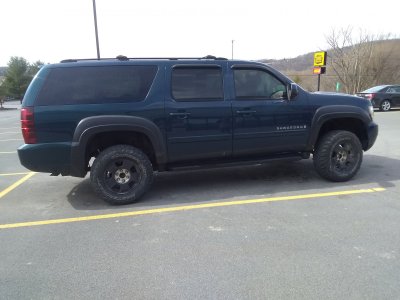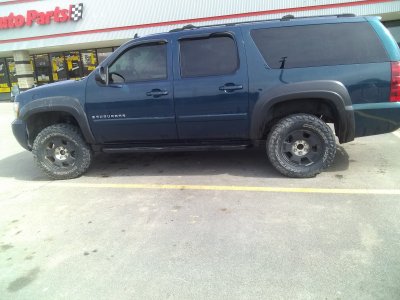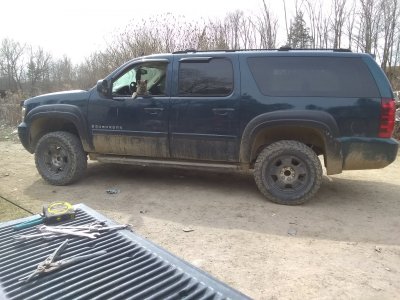Are you saying I want it to bind? And everything is brand new it shouldn't have any premature wear. And it's at almost full droop even with it on its own weight. It only went down a couple inches when I let jack down. My wife asked why I stopped letting it down I pulled the jack out and she was asking why it didn't come down lol
You do not want it to bind. The CV can only handle a certain amount of angle and if that's exceeded the joints will bind up when the ball bearings run out of travel in the housing. Then they break. If you think about how the outer joint moves, it has to flex up/down for suspension travel and right/left to steer. Those two angles add up. So the joint can handle maximum up/down motion when the steering is straight ahead. And of course the CV can handle the most left/right articulation when it's level and parallel to the road.
What I always check after changing ride height is jack it up, let the suspension droop, and spin the tire / hub and make sure the CV is free (hasn't run out of flex). Then turn full left and repeat. Turn full right and repeat. If the CV can't flex that much you'll feel the bind and resistance to turning it by hand. If it's spinning freely at all the angle your suspension + steering combined give it, you are good to go.
The most common failure mode for CV's off road and especially lifted / big tires is having the steering cranked to one side and hitting a hard bump under power. That's when all the parts line up to max out your CV angles.
My comment about premature wear was directed at the future, not the present. A CV running 25 degrees angle is going to wear more than one running 10 degrees. The most common thing I've seen is boots wearing out early from high angle operation.



